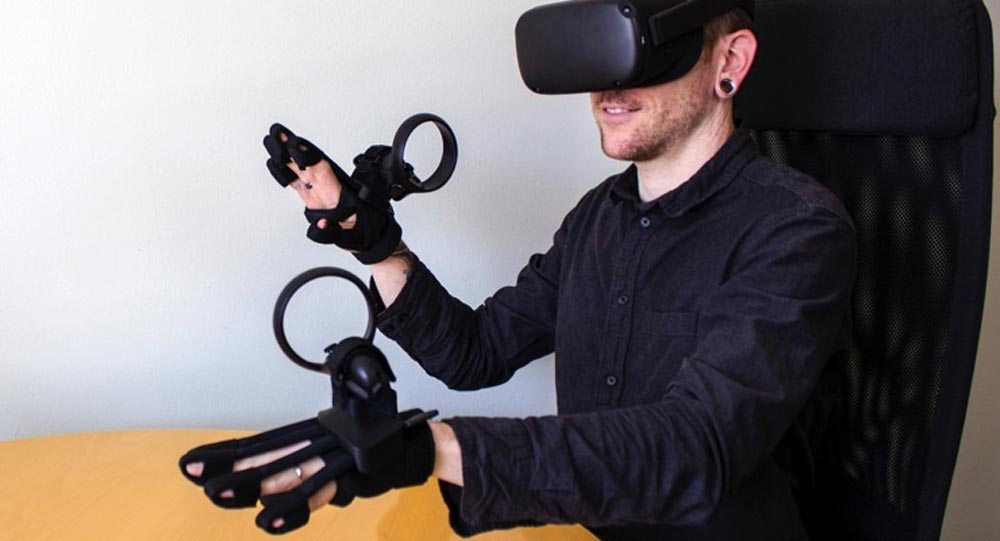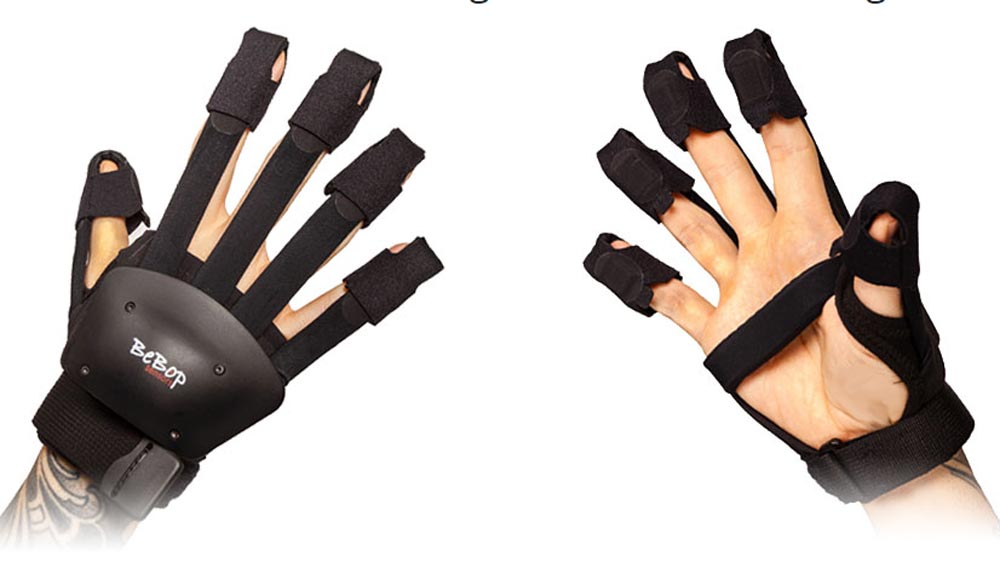BeBop Sensors New Oculus Quest-Compatible Haptic Gloves
There is currently a frenzied pursuit for the most elegant and most practical implementation of haptic technology that will provide for a much deeper immersion for virtual reality experiences. Current experiences are immersive enough but only for visual experiences. To make virtual experiences feel as real as possible, it is becoming imperative that some level of haptic feedback be incorporated in virtual reality experiences that will enable users to touch and feel objects in the virtual world.

There have been lots of haptic feedback prototypes in the recent past. These use varied concepts to implement haptic feedback and for the most part, a lot of these innovations have been impractical, at least from an end user and practicality perspective. The latest invention is by BeBop Sensors with its Forte Data Glove that has been developed based on fabric sensor technology. BeBop has described its haptic glove as the first of its kind designed specifically for Oculus Quest.
The Forte Data Gloves rely on hand tracking haptic feedback technology. They vibrate when a user touches something in virtual reality which provides a more realistic VR experience and enables users to have a realistic feel of the varied textures of the objects and surfaces in VR.
The gloves are synchronized with the virtual reality headset through the Oculus Quest Controller. The two controllers will attach to the haptic gloves via the tracking rings to the top of fingertips or to the back of the hand.
This kind of connection allows for the gloves to be captured with the same precision and quality as the controllers themselves. The design still has a strange appearance but compared to other haptic glove prototypes, it looks convenient and it is also comparatively cheap.

The movements of the fingers will be directly detected by the gloves via a total of ten bending and nine motion sensors. With this design, the spatial shifts (“drift”) will be very low during tracking. There are vibration motors on the fingertips, palms and thumbs that will convey the haptic feedback. This will make surfaces and textures more noticeable.
The Forte Data Glove look more like straps and they encapsulate the full length of the user’s fingers, anchoring around the fingertips. The glasses are a one-size-fits-all and look like a cross of Keanu Reeves’ virtual reality gloves (in the Johnny Mnemonic) and Borg’s exo glove in the Star Trek Voyager.
The Oculus Quest Touch controllers will connect to the top of the Forte Data Glove through an adapter, enabling the glove’s technology to seamlessly integrate with the controller’s 3D tracking.
The haptic gloves capture the finger movements by a whopping 160 frames per second. The manufacturer states that the latency for the finger-tracking is less than 6 milliseconds. The calibration will take less than 5 milliseconds and the battery has a charging time of just 2 hours.
The Forte Data Gloves have a 160Hz (160 frames per second) sensor speed, universal support for various development environments like Unreal and Unity as well as an all-day battery life with a charging time of just 2 hours. Other specifications include its ten smart fabric sensors that are positioned above each of the knuckles which offer users a +/- 1.5-degree accuracy when the user bends their fingers. The gloves are built with six haptic actuators for each of the fingers and the palm. The haptic sensors in the gloves are also waterproof so they are easily washable.
Hands as XR Input
BeBop Sensors is promising “natural” hand interaction just like in the real world. However, for gamers, the challenge will be programming the haptic feedback into the appropriate software. BeBop provides wide options for the development environment including support for Unreal, Unity, Windows API and Java.
The BeBop Sensors says its Forte Data Gloves could be use for training applications, design tasks in XR as well as remote control of drones and robots. The company promises that the pricing will be competitive depending on quantity and that the pricing information will be communicated upon request. The Quest version is currently in production.
It remains to be seen whether the controller’s function and feel will offer end users considerably more added value than Oculus’s native hand and finger-tracking for its Quest headsets. BeBop Sensors’ headset, however, has an edge when it comes to latency (less than 6 milliseconds compared to 80 milliseconds for Oculus’ controller). There will be a tracking update for Quest in 2020 so its current tracking performance could improve next year.
In the video below, you can see the older developer model of the glove in action:-
https://virtualrealitytimes.com/2019/10/24/bebop-sensors-new-oculus-quest-compatible-haptic-gloves/https://virtualrealitytimes.com/wp-content/uploads/2019/10/The-Bebop-Data-Gloves-become-Quest-Gloves-by-attaching-the-Quest-Controller-to-the-back-of-the-hand-600x337.jpghttps://virtualrealitytimes.com/wp-content/uploads/2019/10/The-Bebop-Data-Gloves-become-Quest-Gloves-by-attaching-the-Quest-Controller-to-the-back-of-the-hand-150x90.jpgHapticsHardwareThere is currently a frenzied pursuit for the most elegant and most practical implementation of haptic technology that will provide for a much deeper immersion for virtual reality experiences. Current experiences are immersive enough but only for visual experiences. To make virtual experiences feel as real as possible, it...Sam OchanjiSam Ochanji[email protected]EditorVirtual Reality Times - Metaverse & VR
